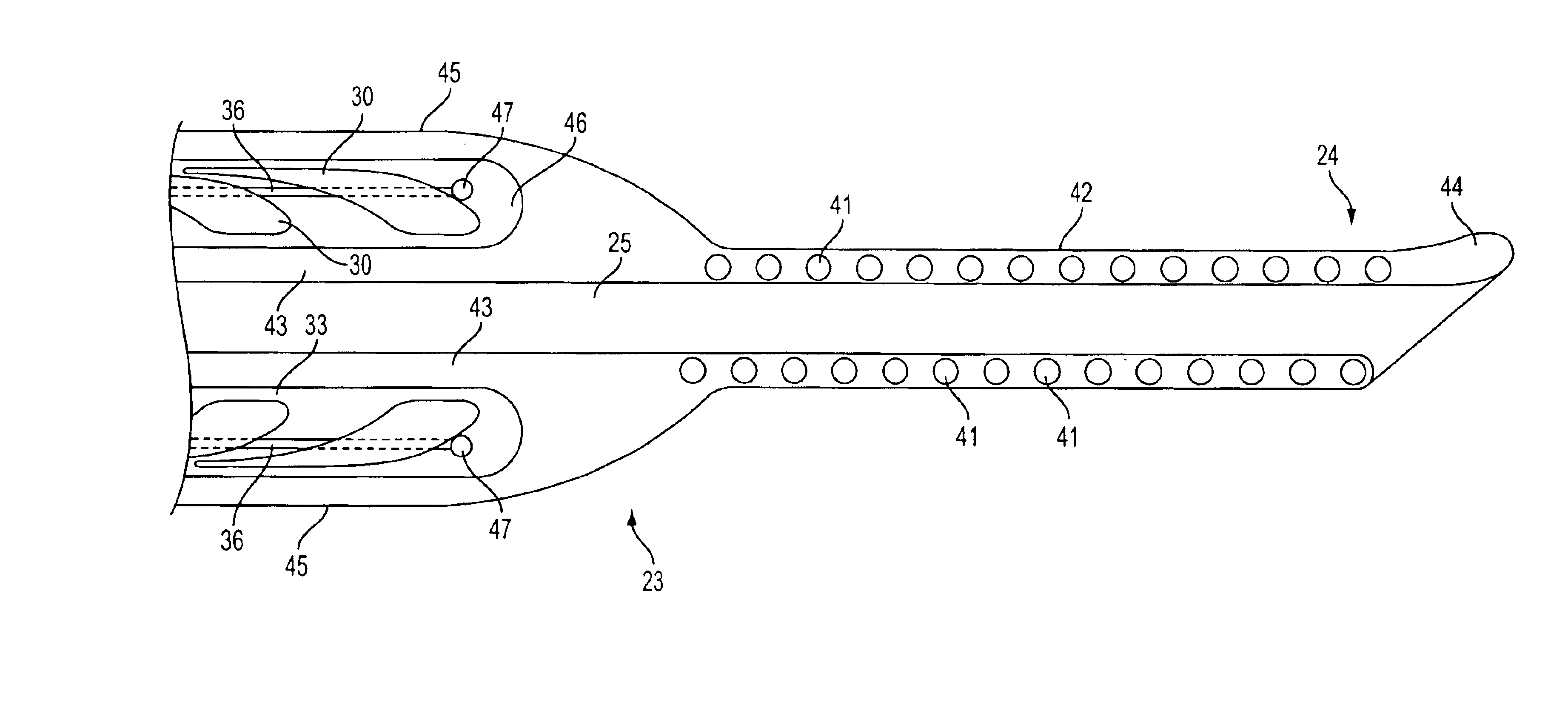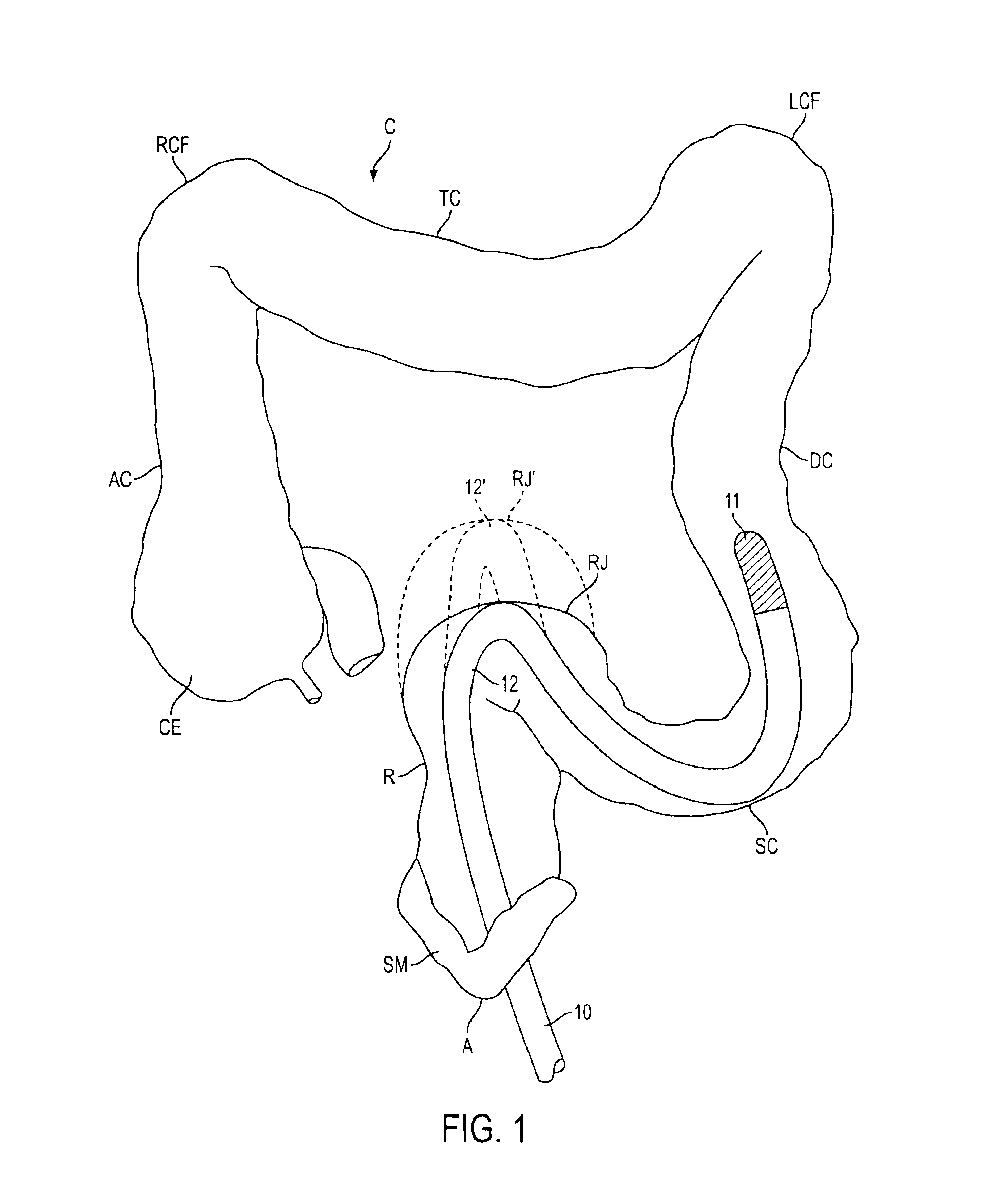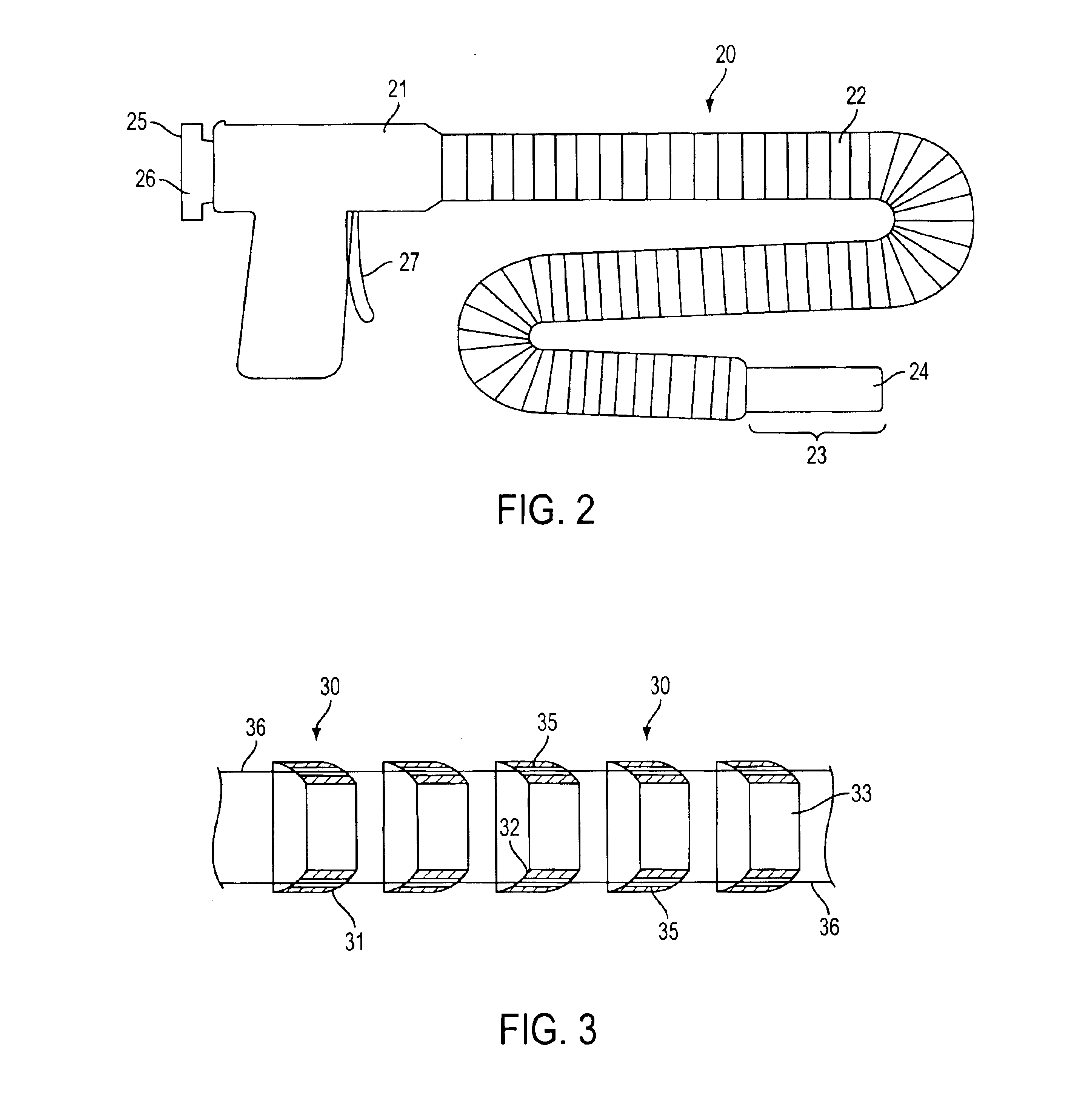Shape lockable apparatus and method for advancing an instrument through unsupported anatomy
- Summary
- Abstract
- Description
- Claims
- Application Information
AI Technical Summary
Benefits of technology
Problems solved by technology
Method used
Image
Examples
Embodiment Construction
Referring to FIG. 1, problems associated with previously-known apparatus and methods for inserting and advancing a diagnostic or therapeutic instrument into a hollow body organ having tortuous or unsupported anatomy, illustratively, patient's colon C, are described. Colon C includes sphincter muscle SM disposed between anus A and rectum R. Rectum R is coupled via the rectosigmoid junction RJ to sigmoid colon SC. Sigmoid colon SC joins descending colon DC, which in turn is coupled to transverse colon TC via left colic flexure LCF. Transverse colon TC also is coupled by right colic flexure RCF to ascending colon AC and cecum CE, which receives waste products from the small intestine.
As illustrated in FIG. 1, colonoscope 10 having steerable distal tip 11 is typically inserted through anus A into rectum R, and then steered through rectosigmoid junction RJ into sigmoid colon SC. As depicted in FIG. 1, distal tip 11 of colonoscope 10 is advanced through sigmoid colon SC and deflected into...
PUM
 Login to View More
Login to View More Abstract
Description
Claims
Application Information
 Login to View More
Login to View More - R&D
- Intellectual Property
- Life Sciences
- Materials
- Tech Scout
- Unparalleled Data Quality
- Higher Quality Content
- 60% Fewer Hallucinations
Browse by: Latest US Patents, China's latest patents, Technical Efficacy Thesaurus, Application Domain, Technology Topic, Popular Technical Reports.
© 2025 PatSnap. All rights reserved.Legal|Privacy policy|Modern Slavery Act Transparency Statement|Sitemap|About US| Contact US: help@patsnap.com



